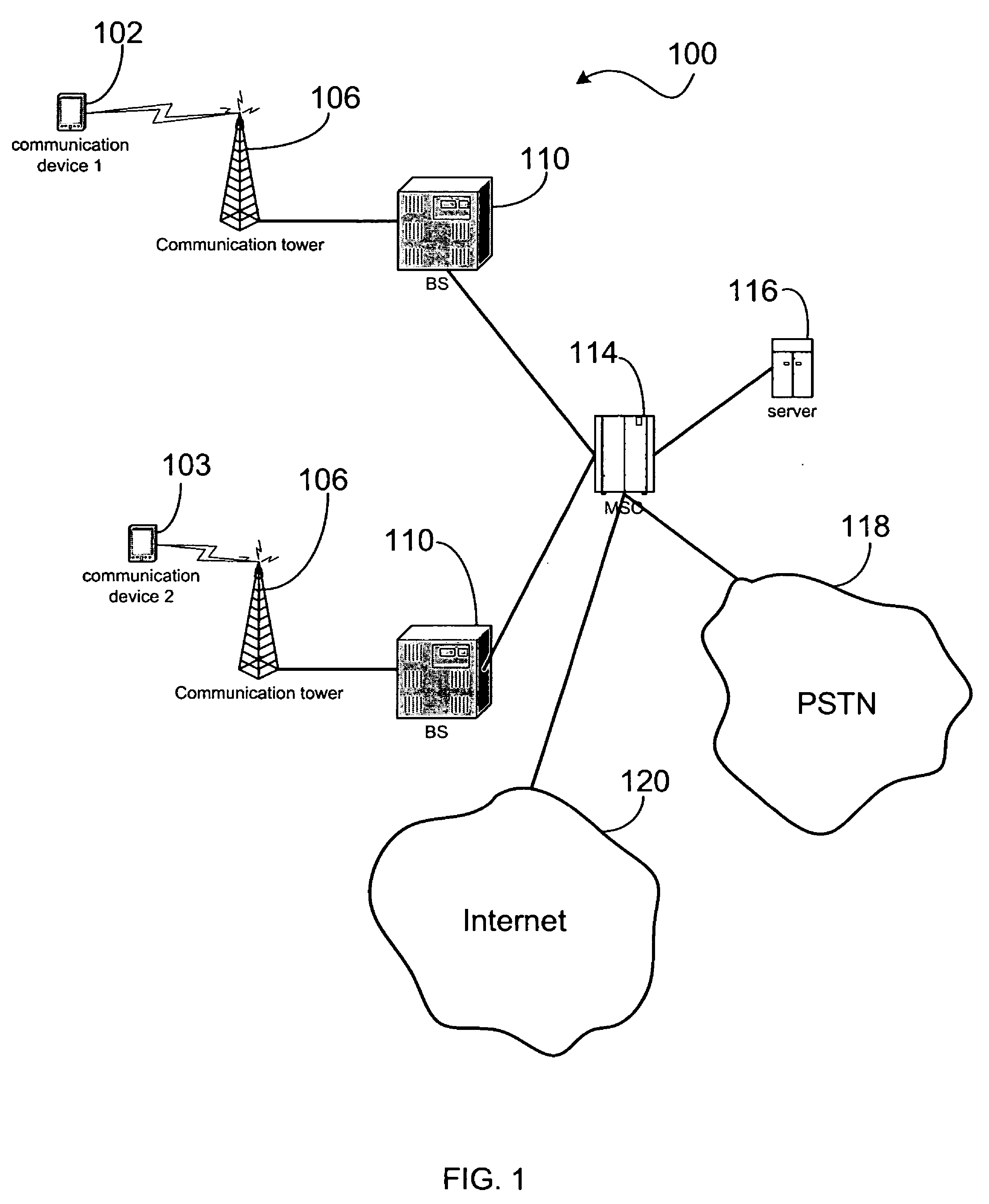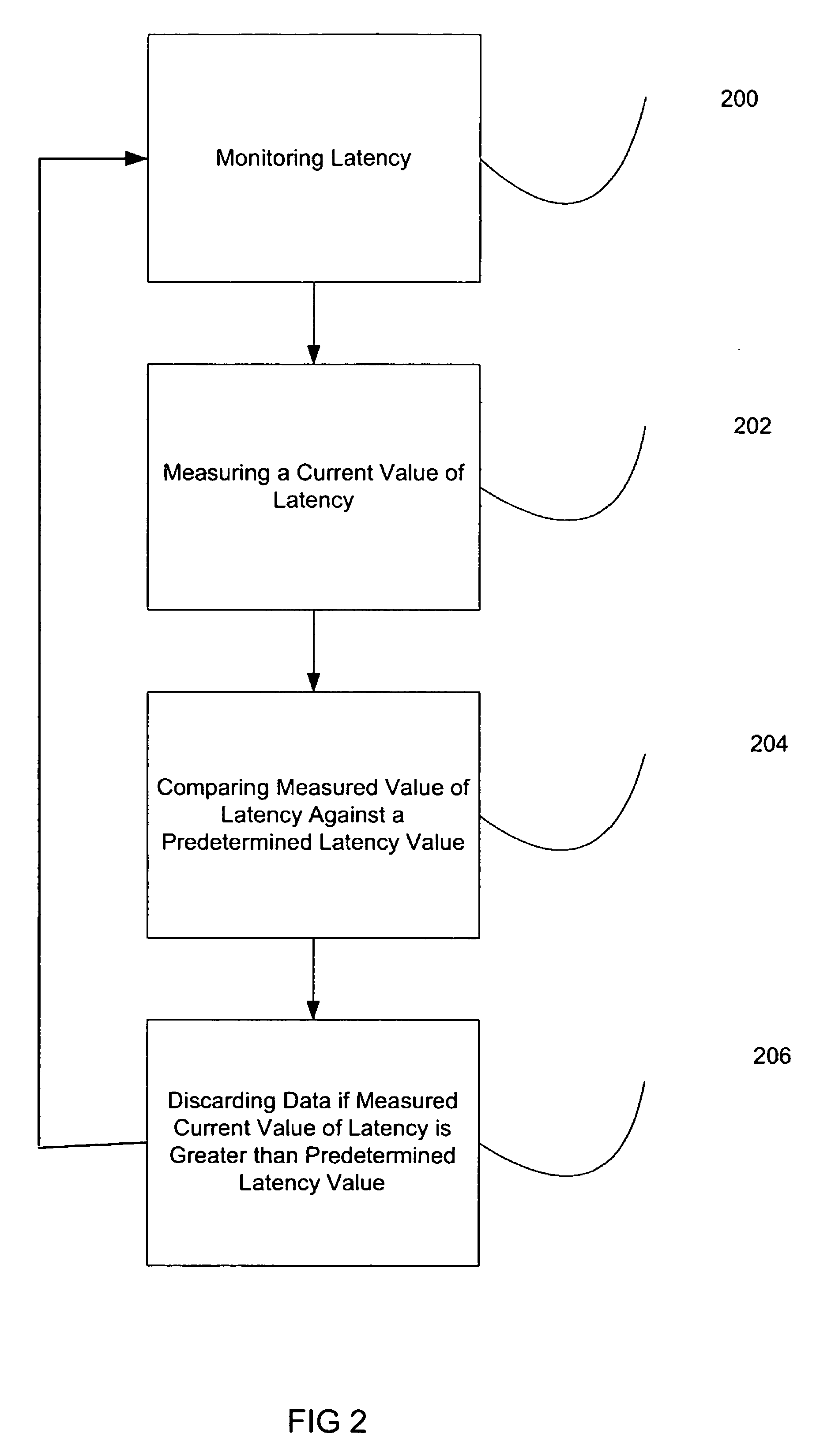Method and apparatus to adaptively manage end-to-end voice over internet protocol (VolP) media latency
a technology of internet protocol and end-to-end voice, applied in the field of vocoders, speech processing, telephony, data communication, can solve the problems of inability to adapt to the capabilities of existing interfaces to the vocoder, the circuit path used may not be perfect or optimal, and the voice quality in these applications degrades gracefully, so as to increase the play-out time of one or more vocoder frames, the effect of latency modification
- Summary
- Abstract
- Description
- Claims
- Application Information
AI Technical Summary
Benefits of technology
Problems solved by technology
Method used
Image
Examples
Embodiment Construction
[0045]The word “exemplary” is used to mean “serving as an example, instance, or illustration.” Any embodiment described as “exemplary” is not necessarily to be construed as preferred or advantageous over other embodiments.
[0046]Before one embodiment of the invention is explained in detail, it is to be understood that the invention is not limited in its application to the details of the construction and the arrangement of the components set forth in the following description or illustrated in the drawings. The invention is capable of being implemented in other embodiments and carried out in various ways. Also, it is understood that the phraseology and terminology used herein is for purposes of description and understanding and should not be regarded as limiting.
[0047]FIG. 1 illustrates an exemplary communication network 100. The communication network 100 includes one or more communication towers 106, each connected to a base station (BS) 110 and serving users with communication devic...
PUM
 Login to View More
Login to View More Abstract
Description
Claims
Application Information
 Login to View More
Login to View More - R&D
- Intellectual Property
- Life Sciences
- Materials
- Tech Scout
- Unparalleled Data Quality
- Higher Quality Content
- 60% Fewer Hallucinations
Browse by: Latest US Patents, China's latest patents, Technical Efficacy Thesaurus, Application Domain, Technology Topic, Popular Technical Reports.
© 2025 PatSnap. All rights reserved.Legal|Privacy policy|Modern Slavery Act Transparency Statement|Sitemap|About US| Contact US: help@patsnap.com



